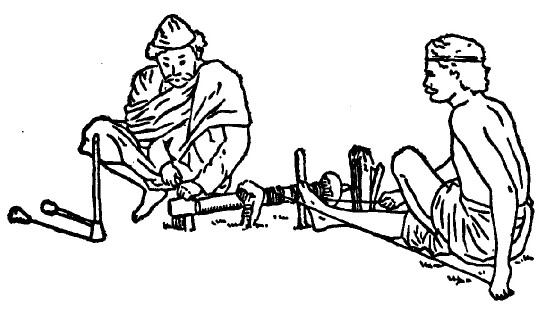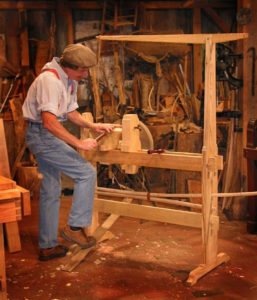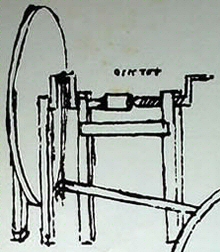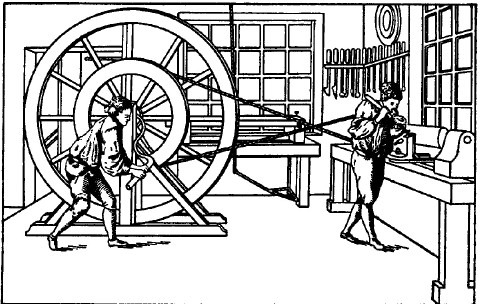Early Lathes
Lathes are perhaps one of man’s oldest woodworking machines dating back to Egyptian times. Examples of lathe turned objects from that time period have been found but unfortunately, I don’t think they have never found a dusty and dilapidated foot powered lathe sitting in the corner of a tomb.
If you think about it, all you need is a way to position a piece of wood or other material between two centers, some way to rotate the work piece and a tool that can be used to shape or cut the material.
The advent of the bow drill probably was the first “power source” for lathes which resulted in what you call a reciprocating lathe characterized by a “forward and back” motion.
At some point, the spring pole as a form of power was developed which did help in terms of using the “spring” from the pole to return the work to the starting point. Still at best these were 50% effective in terms of the time you could cut when the work was only going forward.
Probably the only other advances during this time would have been in better tool rests, screw threads in the tail stock to facilitate positioning and holding the work and likely in the quality of the cutting tools.
In about 1480, Leonardo de Vinci sketched what could be called the next step in foot powered machinery when he illustrated a true treadle lathe. The benefits of this new design were the large flywheel that provided momentum and the crank action that translated the up and down of the treadle into continuous forward circular motion. This was a significant advancement and marked the beginning of the true treadle motion used up until foot powered machinery became obsolete.
Great wheel lathes with there separate large flywheel turned by an apprentice came along after this and offered a lot more power and as long as you had somebody (an apprentice) to turn the great wheel, the operator could easily turn objects all day long.
Early Saws
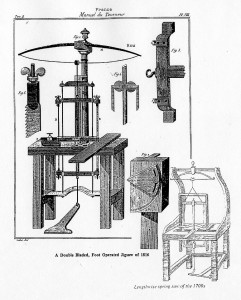 Foot powered saws likely date back to the middle ages in Europe (1200–1500 AD). The same “up & down” motion you can get from a spring pole could be used to move a saw blade to cut wood. The availability of good steel and the capability to make saw blades probably had somewhat of a retarding impact on the foot powered saw and sawing in general.
Foot powered saws likely date back to the middle ages in Europe (1200–1500 AD). The same “up & down” motion you can get from a spring pole could be used to move a saw blade to cut wood. The availability of good steel and the capability to make saw blades probably had somewhat of a retarding impact on the foot powered saw and sawing in general.
By the 1700’s Diderot & Moxon illustrated foot powered saws in their publications.
During this early period before about 1850, it appears that most all these machines were basically made by and for craftsmen to use in their own workshops. Some of these can be seen today at museums and historic sites.
Now let’s look at the Modern Era

